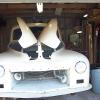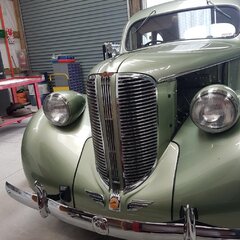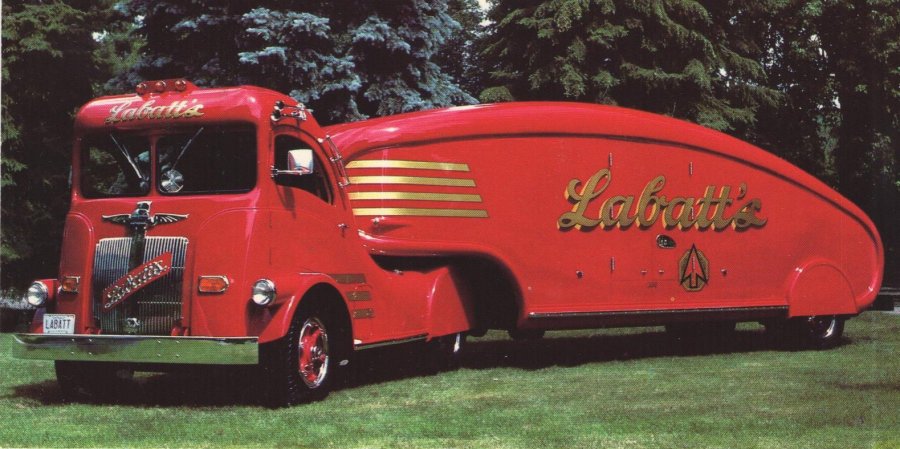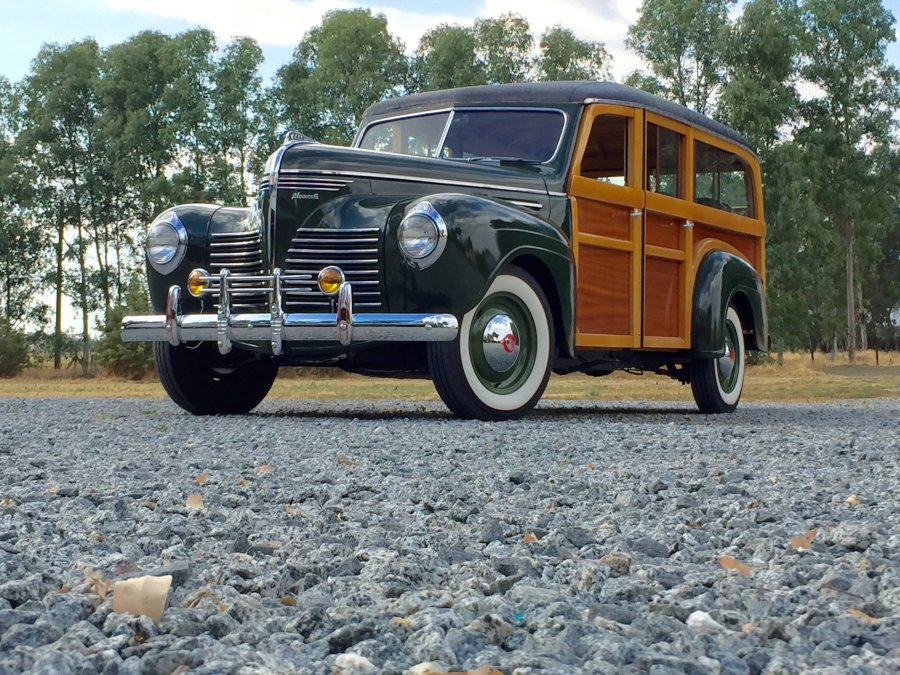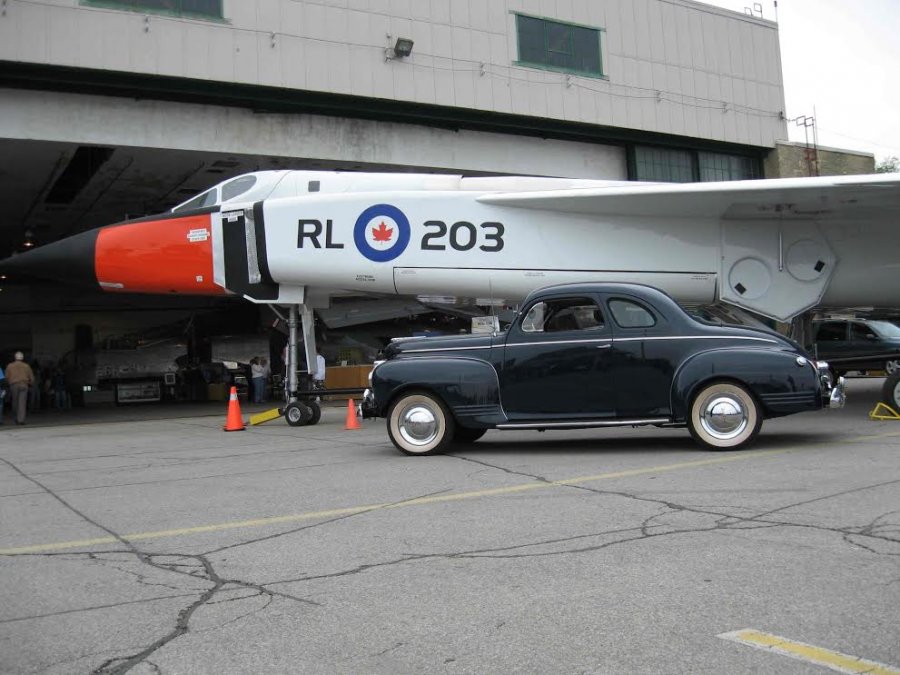-
Posts
562 -
Joined
-
Last visited
-
Days Won
1
Roadkingcoupe last won the day on March 26 2021
Roadkingcoupe had the most liked content!
Reputation
82 ExcellentProfile Information
-
Gender
Not Telling
-
Location
chrycoville
-
My Project Cars
1941 Dodge D20 Kingsway Coupe 41,000 original miles
Contact Methods
-
Biography
infatuated with late 1930's and early 1940's MoPaR
Converted
-
Location
north of the 49th parallel
-
Interests
1930's and 1940's MoPaR's
Recent Profile Visitors
-
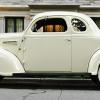
Original Dodge Dealer Poster
Roadkingcoupe replied to Roadkingcoupe's topic in Mopar Flathead Truck Forum
I posted three more 1930's Dealer Posters on the P15D24 forum if anyone is interested in seeing some more. -

Original 1930's Dodge & Plymouth Dealer posters
Roadkingcoupe replied to Roadkingcoupe's topic in P15-D24 Forum
-
Just wanted to share these Original 1930's Dodge & Plymouth Dealer posters that I have had squireled away for years. They measure 38" by 50" and were never actually mounted on the wall. No tape marks No tack holes. Beautiful Plymouth and Dodge artwork with bright and colorful lithography. Of course "Made in the USA"!
-
This is a ORIGINAL Dodge Dealer poster measuring 38" by 50" that I have had stored away. The quality of the lithogragh and the colors are amazing. It was never on display and has no tap marks or holes from tacks. Just wanted to share with the forum.
-
Ontario Reman (Toronto) was on Caledonia road just North of Lawrence by what I believe was owned by Fenwick Automotive or Levy Auto Parts? the motor was tagged from a rebuild by them and it was an authorized Chrysler rebuilder.
-
Art Deco Beer Delivery I have been on this truck and it is stunning. "Labatts Streamliners were a unique sight in Canada from 1932 to 1955. The tractor chassis was produced by White Motor Company and the trailer chassis by Freuhauf. Designed by Count Alexis De Sakhnoffsky, the bodies were crafted by Smith Bros. Body Works in Toronto. Joe Scott together with his brother Bob of London Ontario took up the arduous task of restoring this famous streamliner for the Labatt Brewing Company and their skill along with 7 years of dedication to the minute detail have seen this beautiful legend return to mint condition."
-
Thoughts on the 1937 -1939 Chrysler cars.... The 1937 Plymouth was advertised as the "ALL STEEL" car. This referred to the fact that they were stamping the roofs in solid sheet metal and getting rid of the rectangular vinyl insert that was found on 1936 and prior cars. If you take a good look at the 1939 Plymouth the only "flat" exterior body panels were the two vertical drop boards that go between the hood halves and the front fenders. Every other inch of the car has some king of curved or compound curved surface. As a result the 1939 Plymouth Coupes were considered "bulbous" with huge curved fenders, roof line and trunk lid. It seems the technical ability to stamp / press large panels of metal into extremely curvaceous body panels reached a crescendo with the 1939 Plymouth Coupe (and sedans to a lesser extent). As a result some people find the 39's overdone. They look almost cartoon like...and I love it. The 1940 and on redesign saw the bodies widen and the fenders shrink. The 1941 Plymouth might be one of the most balanced designs of the decade and is a poor mans classic. The point is that prior to 1940 the cars peaked in their curvaceous styling and "roundness", maybe a love it or leave it for some folks but none the less a beautiful exercise in design and technical abilities to produce an almost exaggerated larger then life statement. Over 30 years of ownership the 1939 Plymouth Coupe has had many small children literally run from their parents towards the car like it was a "cartoon" car in larger then life scale. Let me know what you think. Pictured below.......
-
Actually have helped other fellow enthusiasts mostly.
-
It has been a practice for the last 30 years to carry a box in the trunk of useful items for Breakdowns and Spares. Just curious what else people carry for safety and spares concerns? Suggestions? Found in the trunk of my car.... FIRE extinguisher, wheel chock, tow rope, rags & hand cleaner, small tool kit. Spares: tubes, V-belt, ignition parts, Oil, Brake Fluid, lug nut wrench, bumper jack (yes it is unsafe...wheel chock), jug of anti freeze or water, AAA card, battery operated radio.
-
This is a common problem on many public internet forums. It is not limited to auto related sites either. There seems to be an ebb and flow to this phenomenon and it is worthwhile to understand. As a site grows it seems to develop different "flavors" of participants. They include the "frequent flyers" the vocal (high post counts) and exclusively readers as well. There are members who read or post for entertainment and those who want to share info, stories and or resolve a specific issue. There are members who really enjoy the site but never post (nothing wrong with that either). Possibly more people read then ever post on the site. What's troubling is the % of members who read or visit and rarely post. Nothing wrong with it BUT they are the silent majority (not a political reference). As a result the tone and tenor of the high participant vocal members set the tone for the whole forum. By nature the quiet majority are rarely heard and that skews the optics about the "personality" of the site. I really think that there is room for everyone. Some of the "vocal" posters are very knowledgeable and I would miss their "wisdom". I sincerely encourage a community that is welcoming to all members as the 1930's 1940's 1950's MoPaR interest could easily die off due to demographics. We need to encourage younger members and make it a welcoming site for all. Restorers and hot rodders have generally tolerated each other on this site much better then elsewhere. The growth of this site and the relatively dwindling participation in the Plymouth Owners Club is a good example. There is room for everyone, I hope it can remain inclusive. The more the moderators need to ref the site the more restrictive the site might become. That would be a loss.
-
Hi Roadkingcoupe,
I was reading past posts and 5 years ago we discussed Plymouth clocks and glovebox doors with clock openings. I am still looking for the 1940 door (I have the clock). Did you ever install your '39 glovebox door?
-

Hi Bob,
Good to hear from you.
I sold the clock and the matching glove box door together.
Will keep an eye out for a glove box door for your 1940 Plymouth (and let you know when I find one).
Hope all is well and you are enjoying your cars!!!
-

Yes, I am. I've just got it running well- overdrive shifts when it should, motor runs cool, etc. Here is a recent picture that we are using for a wine label (i'm part of a hobby winery here in CA) thanks for looking out for me!
Bob
-
-

1938 Dodge D10 (Canadian) New Addition
Roadkingcoupe replied to 1949 Wraith's topic in P15-D24 Forum
The rather crude name for a Plymouth bodied Canadian Dodge is a "PLODGE". Here is a 1941 Canadian D20 Plymouth bodied Dodge D20 -
1938 Canadian Dodge D10 tail lamp base part # 667025 right side (passenger side) # 667026 left side (driver side) For more info PM directly..
-
Source "PLYMOUTH BULLETIN" "Product of Chrysler engineering and craftsmanship, Plymouth has been so named because its endurance and strength, ruggedness and freedom from limitations so accurately typify that Pilgrim band who were the first American Colonists." That was the official line. It sounded quite logical. The name came from the Plymouth colony of the Pilgrims who journeyed to North America on the good ship Mayflower. And the official line was backed up with pilgrim garb supplied to each dealer with which to dress up some willing (?) employee to lead a Plymouth Parade introducing this new low-priced car for the young Chrysler Corporation. It was not entirely new, this "new" low-priced car. When Walter P. Chrysler took over the bankrupt Maxwell company in 1923, he finally had the foundation to bring out the car of his dreams; one bearing his own name. However it was soon apparent that the Maxwell name, corrupted by a series of poorly built cars that had brought the company to bankruptcy, was an irretrievable liability. Therefore in 1926, he put a Chrysler radiator on the Maxwell and rechristened it the Chrysler 58 (its supposed top speed). Yet this move was but a holding action. Already in 1926 Walter Chrysler was planning a full-fledged entry into the low-priced field dominated by Ford and Chevrolet. Indeed, Henry Ford had warned Chrysler, "You'll go broke! Chevrolet and I have the market all sewed up!" But WPC wasn't one to fear to such warnings. In fact he was more likely spurred on by them to prove such warnings wrong. And Ford's rapidly declining Model T sales seemed to indicate that the giant was vulnerable and that the warning could indeed be proven wrong. To take full advantage of this vulnerability, Chrysler needed the "perfect car with the perfect name." That name was to be "Plymouth." Named after Plymouth Rock, that great American symbol, right? Well, not quite. Behind the "official line" is a story that surfaced years later. It is about what really happened behind those closed boardroom doors. "What we want," Chrysler had said, "is a popular name, something people will recognize instantly." In that room was Joe Frazer, later to become president of Graham Motors and still later to join Henry Kaiser in a post-war automotive venture. "Well, boss," replied Frazer, "why not call it Plymouth? That's a good old American name." The other assembled executives looked askance the notion of their car bearing such a puritanical sounding * name. Yet against his colleagues' misgivings, Joe Frazer persisted. "Ever hear of Plymouth Binder Twine?" he asked. " Well," boomed out Chrysler, "every goddam farmer in America's heard of that!" The hidden appeal wasn't wasted on this one-time Kansas farm boy. Every farmer had to have a car, and most of them at the time were driving Fords. Now here was an opening to the giant's vulnerability. "Every farmer uses Plymouth Binder Twine," he said, "let's give them a name they're familiar with!" And so the name was Plymouth. The Mayflower ship on its radiator suggested the rock and the Pilgrims, but if it wasn't for the binder twine, there would never have been a car named Plymouth. On January 11, 1928 the first Plymouth was produced. As it turned out, this was the best of times for introducing a low-priced car. Ford was just beginning Model A production after nearly a year's shutdown. Chevrolet's six was yet a year away. Hudson's Essex was in decline. Willys' Whippet was selling like hotcakes, but it had already peaked. And, most importantly, the stock market crash of 1929 was yet a year away. The new Plymouth sold well, reaching Number 15 in production its first (half) year. By 1931 it had already reached the Number Three position, which it would hold until 1954. In 1932, while Chevrolet and Ford sales were dropping drastically from pre-depression highs, Plymouth was the only car to gain in sales over 1931. In fact, all through the Great Depression Plymouth continued to gain in sales, a remarkable feat considering the times. Henry Ford, as it turned out, was almost right. He had left out one word in his warning to Chrysler. He should have said, "if you don't build a Plymouth, you'll go broke."
-
Bill...thanks for the factual input and excellent information. Always a pleasure to read your posts. Andydodge....the pot metal vs. presses metal (over a steel armeture) headlamp bezels (doors) were also available in both variations on the 1941 Plymouth's in the US as well. They were OEM Mopar and have separate part numbers as listed in dealer parts books.


